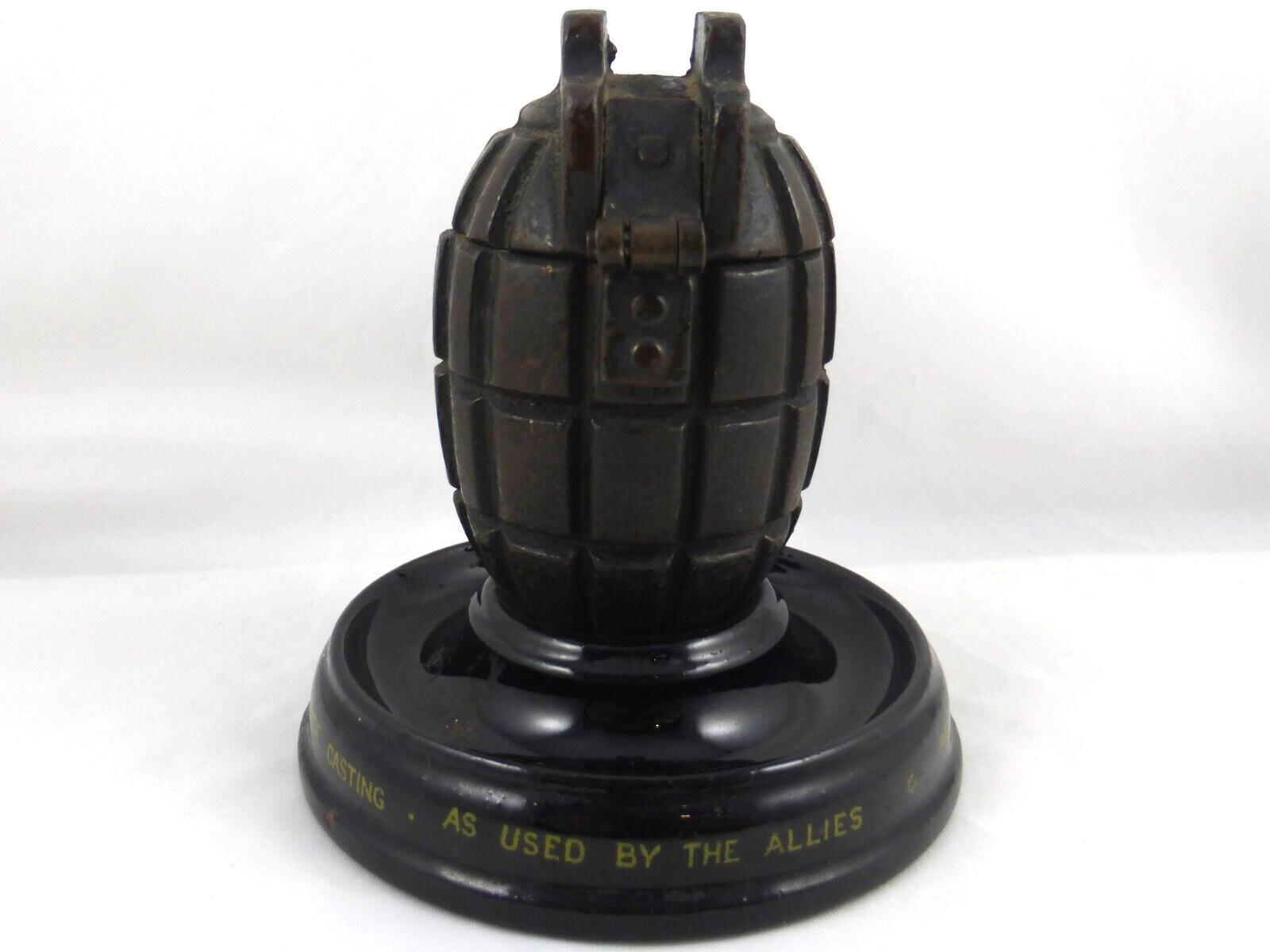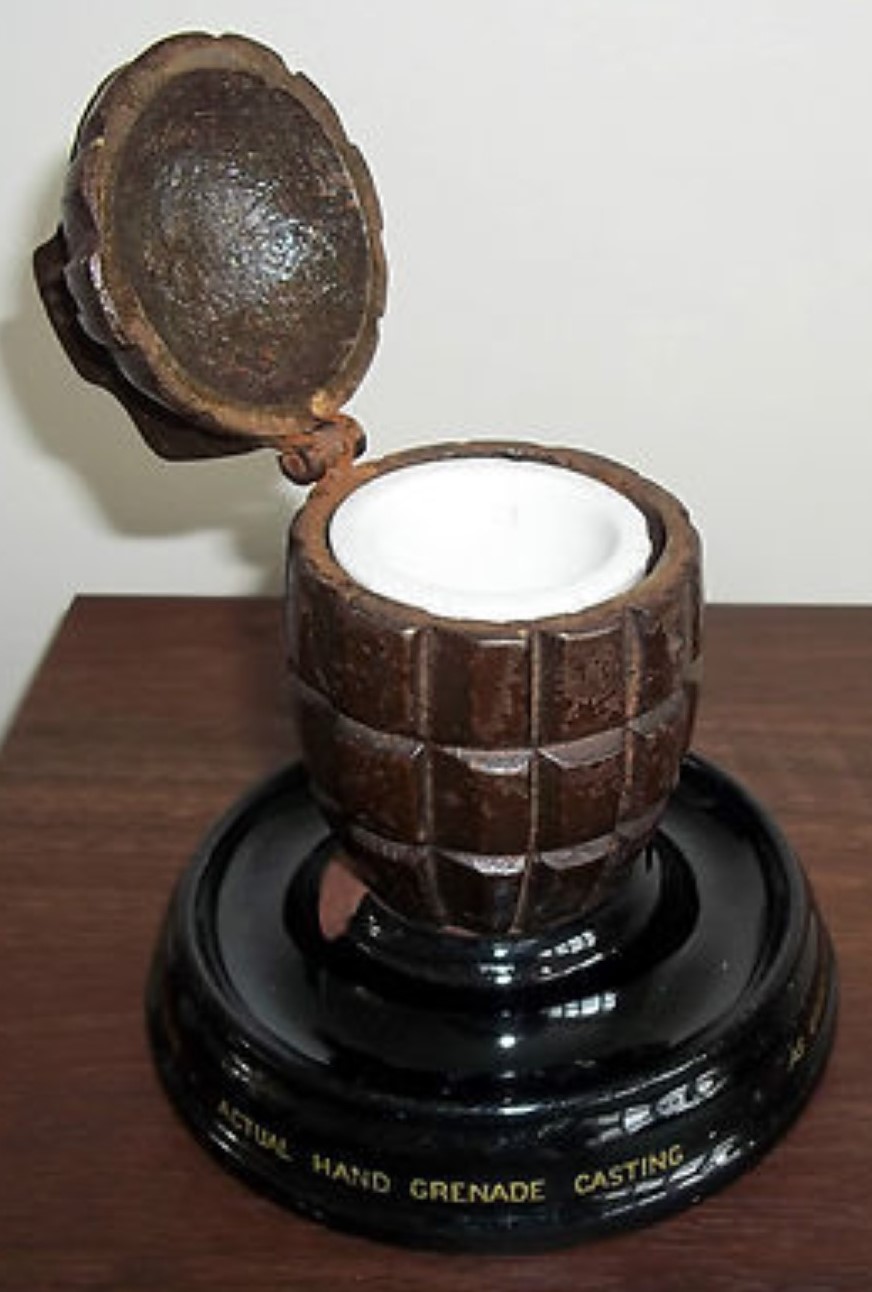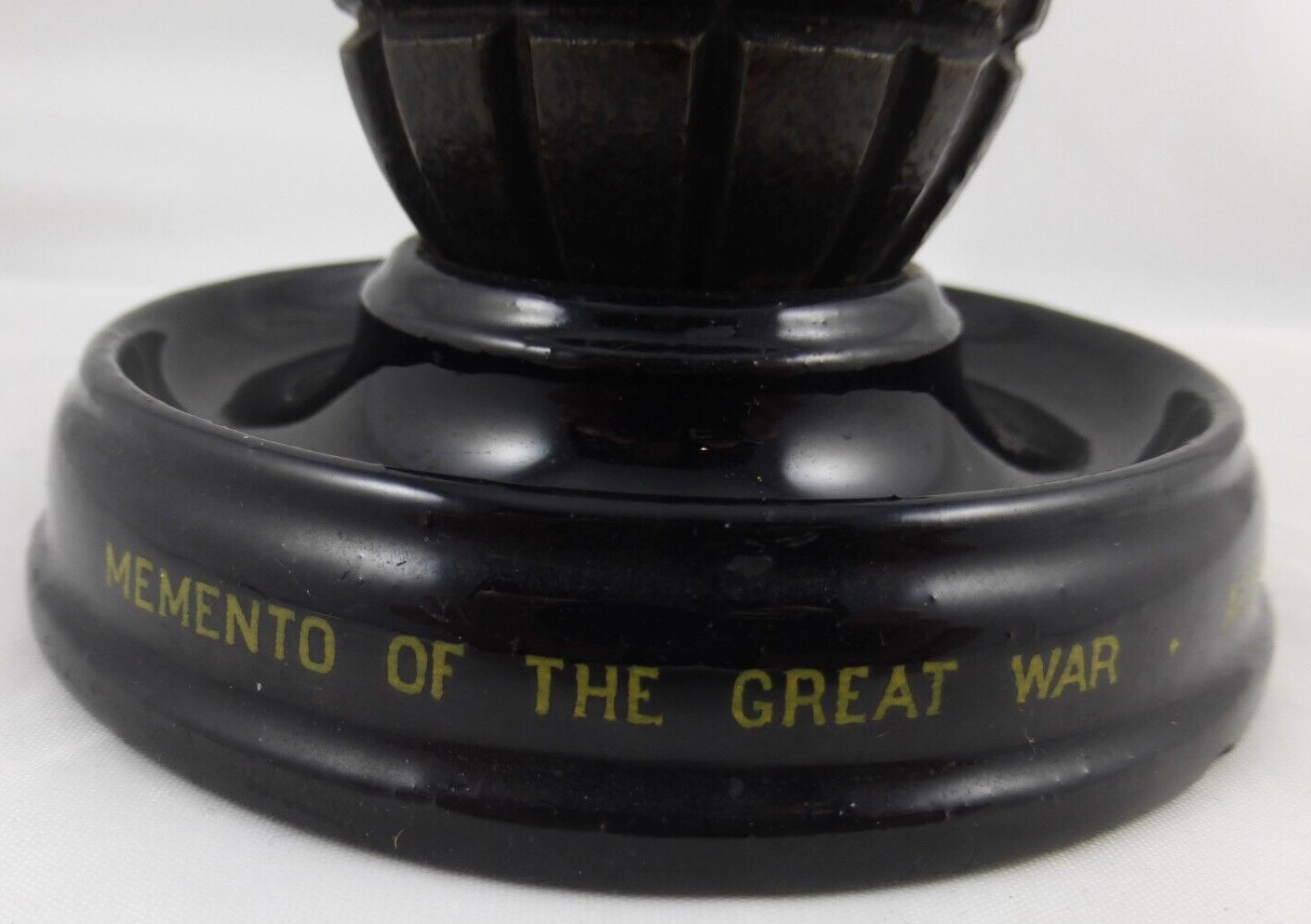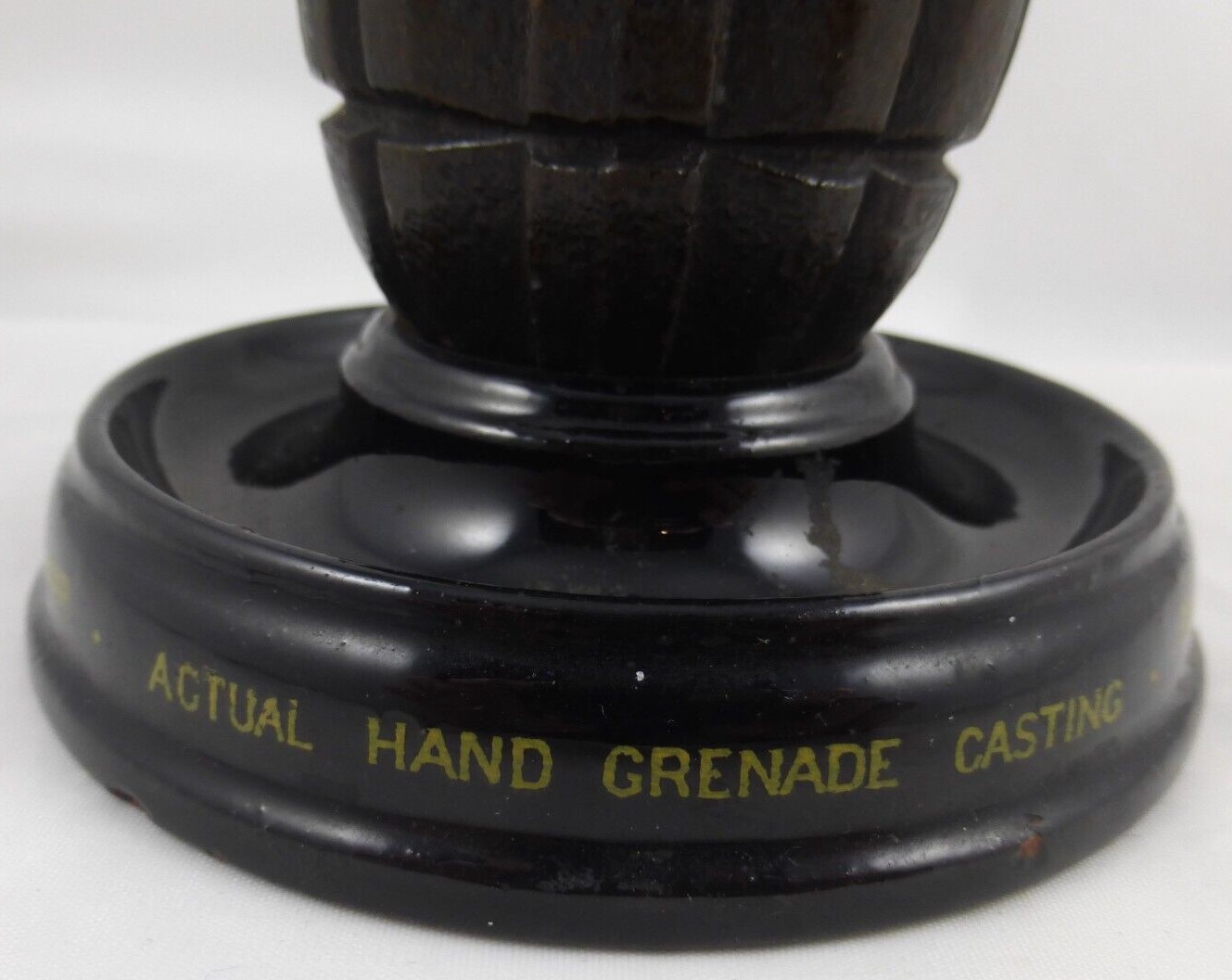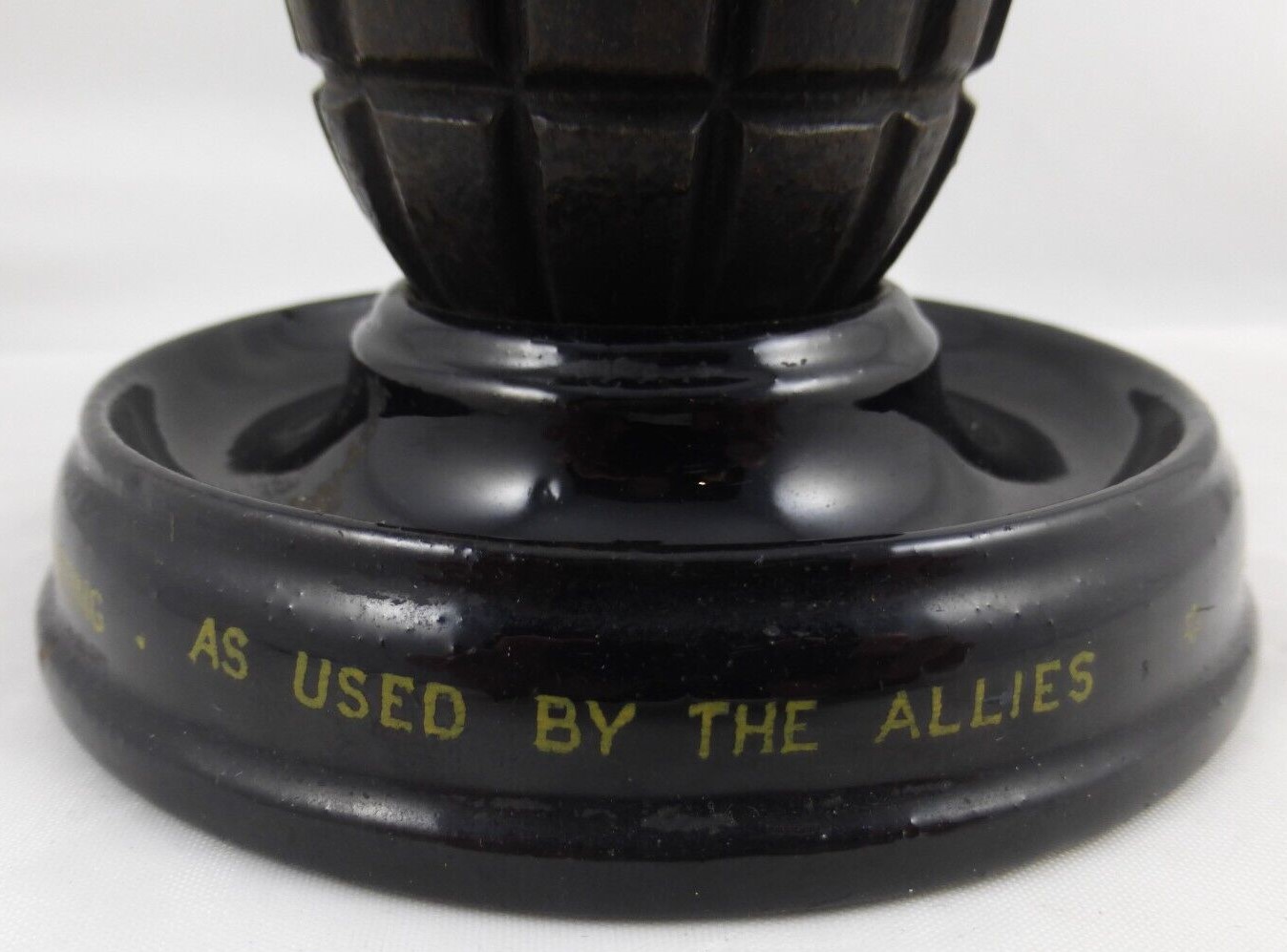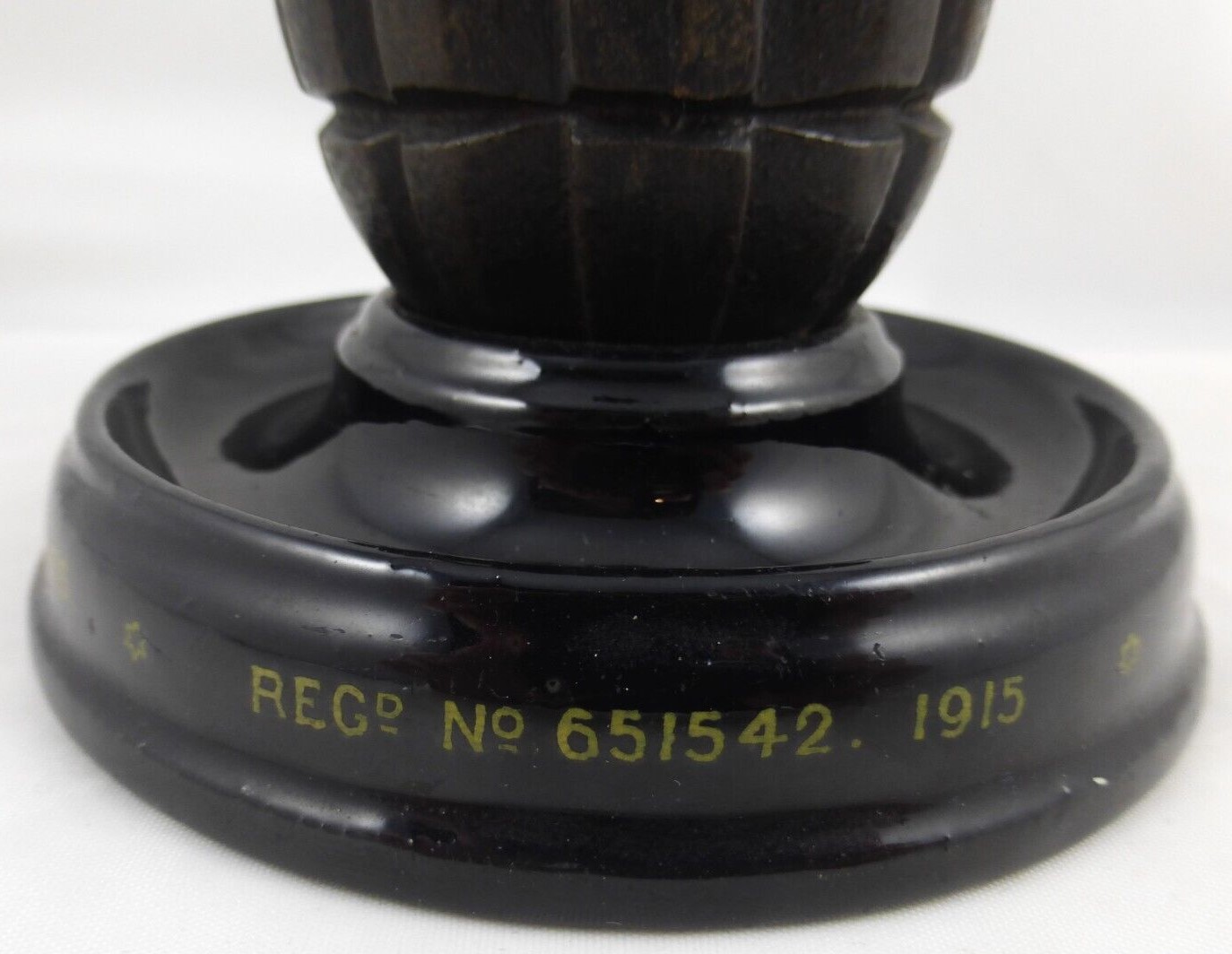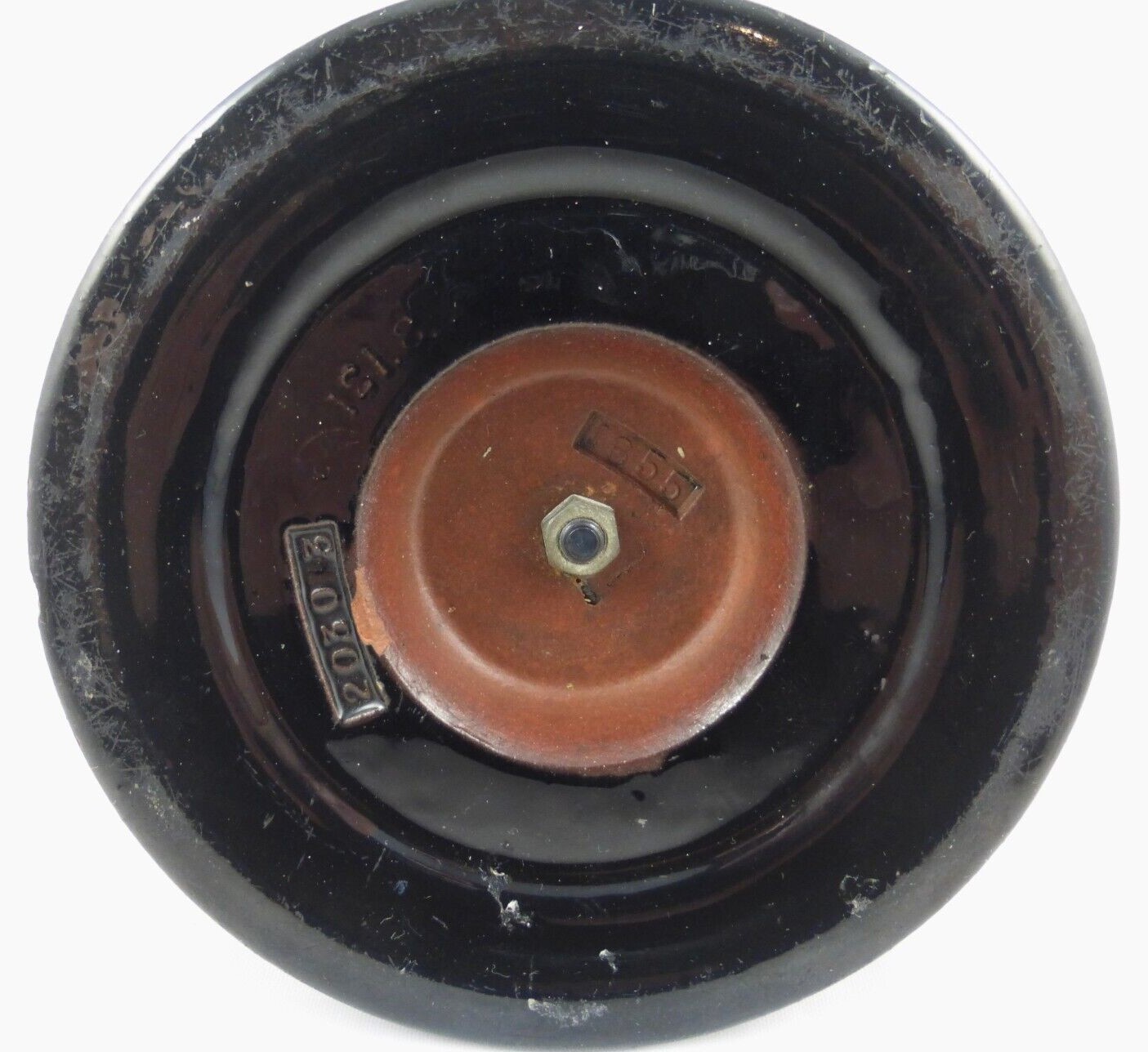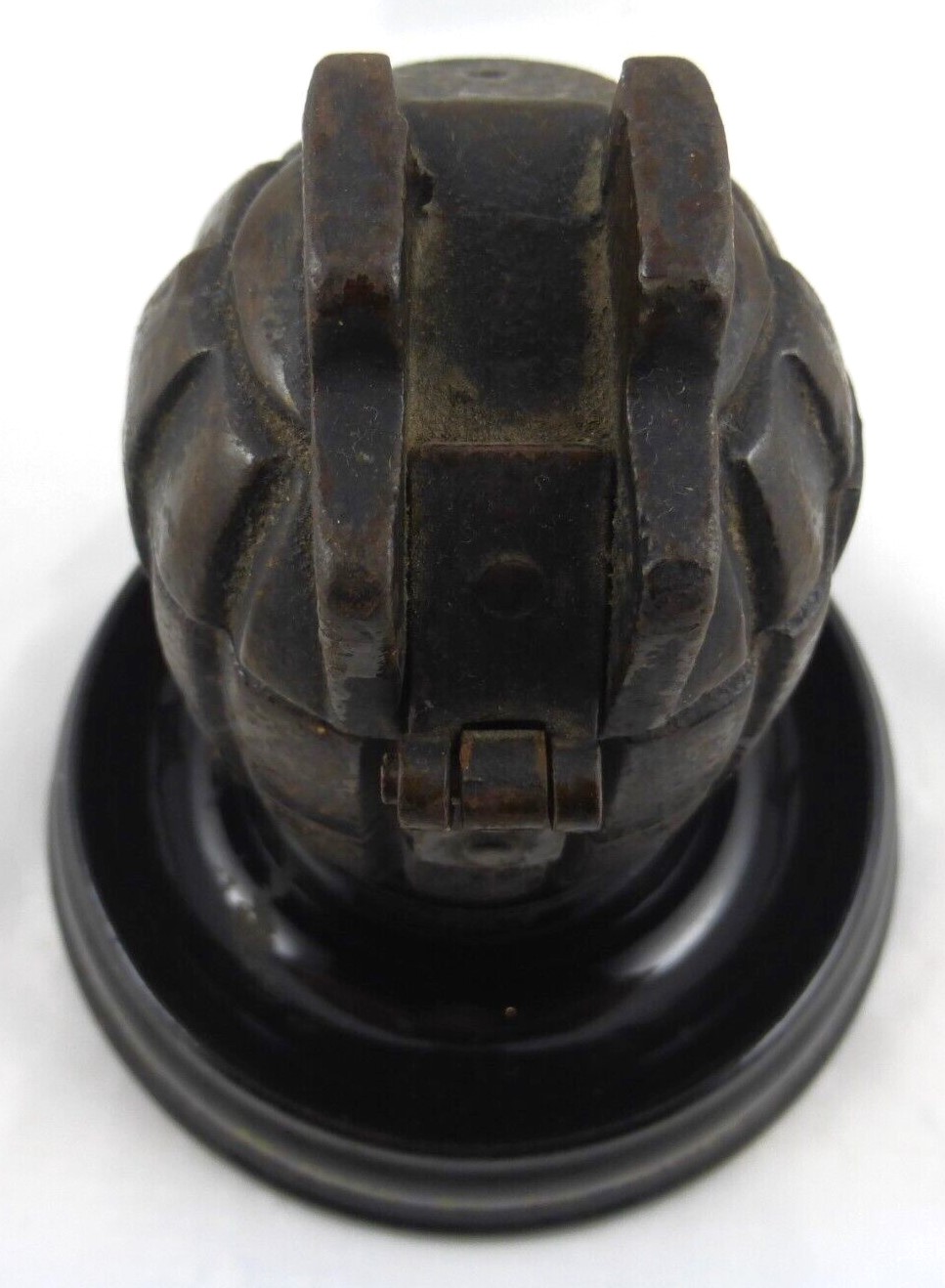
WWI Hand Grenade Inkstand
| Categories | Figural - Inanimate |
| Type | Military |
| Material | Cast iron, Porcelain |
| Markings | See Narrative |
| Manufacturer | Undetermined |
| Origin | England |
| Date or Era | circa 1915 |
| Measuring | 4 ¼” diameter; 4 ¼” tall |
This inkstand was made from a WWI Mills hand grenade casting. When the First World War finished, unused grenade castings were used to make remembrance inkstands. On the front it says “Memento of the Great War actual hand grenade casting as used by the allies”. On the back is registration number 651542 and the year 1915. The grenade is cast iron, and the base is heavy duty porcelain with a gloss black finish.
A Mills grenade is a type of hand grenade that was designed by William Mills, a hand grenade designer from Sunderland, England, in 1915. It was the first modern fragmentation grenade used by the British Army and saw widespread use in the First and Second World Wars. The Mills bomb was adopted by the British Army as its standard hand grenade in 1915 as the No. 5. The Mills bomb was a defensive grenade meant to be thrown from behind cover at a target in the open, wounding with fragmentation, as opposed to an offensive grenade, which does not fragment, relying on short-range blast effect to wound or stun the victim without endangering the thrower with fragments, which travel a much longer distance than blast.
Sold for $114 in November 2023
Content disclaimer. The information posted is the owner’s best knowledge and may not have been vetted by the SOIC. We welcome comments, corrections, and additions, working to make our website information comprehensive and accurate.
Join the Society of Inkwell Collectors (SOIC) – it’s free!
Founded in 1981 as a non-profit organization,
we are documenting inkwells (and accessories).
We’re here to help and inform!
